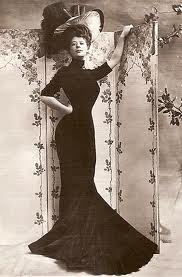Two articles in the New York Times, and news of a (new to me) portrait of Jane Austen, continue to shed light on the author most recently known as “not as good a writer as V.S. Naipaul.”
The portrait is interesting; I had only ever seem the one of her by her sister Cassandra. This one makes her look quite stylish and almost modern, almost a Gibson girl. Is it just me, or is it almost romanticized?
In Lessons from Jane Austen, reviewer Miranda Seymour takes a look at “A Jane Austen Education,” by William Deresiewicz.
Deresiewicz didn’t start out as a fan of Austen, but came to it over the years. As the review points out, Austen doesn’t do much for world-weary cynical young students — they much prefer their novels to have less drawing room and more angst. But Deresiewicz comes to understand that what Austen is doing isn’t about the romance or the stifling lives of the middle class but about family, humanity, humility, society. Austen’s novels are constrained and that makes them look small, but constraints give rise to art — no constraints encourage sprawl. For instance the sonnet has a rigid form, and yet in that form the greatest poetry in the English language was produced.
Seymour’s review also quotes Mark Twain on Austen: “Every time I read ‘Pride and Prejudice’ I want to dig her up and hit her over the skull with her own shinbone.” I love this, especially the part about “Every time.” Ah, Twain! I love you too.
Another New York Times piece is on the two portions of Austen’s unpublished manuscript “The Watsons,” which are currently residing in New York before one portion goes on the auction block at Sotheby’s. I am not an Austen scholar, just a rabid fan, so I didn’t know about The Watsons, just Sanditon, which I gather is a different unfinished work. The article surmises that The Watsons was too difficult for Austen to finish, since it revolves around a poor, unmarried women with no prospects whose only friend is her clergyman father, which might have been too uncomfortably close to her own circumstances.
Actually, it sounds to me like the another Emma, only without her advantages of wealth. I wonder if Austen started it before Emma and gave it up, once she realized that her readers weren’t ready for such Naturalism for another 200 years or so. Or, if she started it after, and she figured that since she had already written this story once, she didn’t have to again.




3 Comments
Bethe Ann Bugbee · June 14, 2011 at 9:34 pm
Anyone else wondering if she’s holding onto the screen because that’s the only way to keep that pose without falling over?
Patrice Sarath · June 15, 2011 at 6:10 pm
Giggle. Probably. What an exaggerated silhouette.
Consuelo Grant · June 20, 2011 at 12:20 am
…they much prefer their novels to have less drawing room and more angst….
Brilliant. I love those moments when I pause. Admire your art.